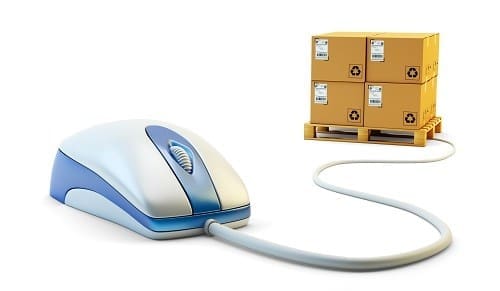
If you’re a small business owner, tax season can be one of the most stressful times of the year. It doesn’t have to be so challenging, though. We’ll go over 11 simple things you can do to breeze through filing this year and beyond below.
Why is Tax Season So Stressful for Small Business Owners?
Most small business owners are responsible for multiple aspects of their companies. You’re probably the manager, accountant, human resources department, and can add dozens of other titles to your name too. That makes it challenging to be organized throughout the year, to begin with, but as tax season approaches, you’ve got deadlines with potential bills and fees hanging over your head as well. If this sounds familiar, read on. We’ve got you covered.
Managing Tax Season Stress is Easy When You Set Yourself Up for Success
Meditation and self-care can only go so far when minimizing tax stresses as a small business owner. Knowing what to focus on and being prepared are keys.
1. Know Your Tax Filing Deadline
The IRS has multiple deadlines throughout the year, with certain types of entities being required to file tax returns by March 15. Sole proprietors get a small break and have the same April 15 deadline as individuals.
It’s worth noting that even though the IRS has extended the deadline in the past, the agency plans to stand firm on the traditional April 15 deadline this year, per CNBC reports. While you can file for an extension if you’re in a pinch, overlooking the date entirely can leave you with penalty fees and interest. Mark the date on your calendar now and set aside time to tackle the various preparation tasks well in advance.
2. Don’t Go it Alone, Hire an Accountant
Particularly with all the self-help tools available today, it can be tempting to save a few bucks by handling your own tax return. However, tax preparers can reduce your stress by providing an extra layer of assurance that you are less likely to get audited and have an issue down the line. Plus, tax professionals stay on top of all the latest changes, so you may wind up saving money overall by not missing out on potential tax deductions.
3. Separate Your Business and Personal Finances
Business owners often mingle their personal and business finances. It’s the simplest thing to do when you’re running the business alone and aren’t taking a standard paycheck or salary. However, experts caution against this practice. “As a business owner, establishing a distinct separation between your personal finances and your business finances is pivotal for protecting your own assets and credit,” the Small Business Administration (SBA) reports.
If you aren’t already tracking finances individually and using separate bank accounts, make the split now to reduce potential issues in the future. You can also use a credit card for business transactions to make splitting them from your personal expenses easier.
4. Keep Your Tax Information Organized
Following number three on this list will go a long way toward keeping your finances organized, but it’s not enough by itself. You should have a system in place to keep receipts organized throughout the year, so you aren’t forced to dig for papers and possibly overlook expenses you can write off when tax season approaches. To simplify things further, you may even want to invest in business finance software that can help you stay organized throughout the year to ensure you have accurate records.
5. Create a Tax Schedule for Other Quarterly Taxes
Medicare taxes, payroll taxes, Social Security, and more typically have quarterly due dates. At this stage, you may also owe state and federal taxes based on your anticipated annual earnings too. Meeting these deadlines helps ensure you stay on track and don’t wind up with a surprise bill when it’s time to pay your small business taxes.
6. Make Sure Your Business is Structured Properly
Rules are different for sole proprietorships, partnerships, LLCs (limited liability companies), and S corporations. A tax professional can walk you through the options and help identify which one is not only appropriate for your situation but will allow you to minimize your tax liabilities too.
7. Contribute to Your Retirement Account
One of the most recommended retirement account options for self-employed people is the SEP IRA. This employer-funded retirement account allows you to contribute nearly ten times more than you’d otherwise be able to contribute to a traditional IRA and reduce your business income tax in a big way. “But they also carry a contribution quirk,” explains CPA and former IRS agent Kemberley Washington for Forbes. “As an employer, you must contribute the same percentage of employees’ salaries to all those eligible for a SEP IRA.” With that in mind, you may want to go an alternate route if you have employees and don’t want to make everyone equitable shareholders.
8. Lower Your Tax & Maximize Your Refund
If you don’t already have a retirement account, setting up retirement plans for you and your team can help too. “Eligible employers may be able to claim a tax credit of up to $5,000, for three years, for the ordinary and necessary costs of starting a SEP, SIMPLE IRA, or qualified plan (like a 401(k) plan.),” the IRS notes. “A tax credit reduces the amount of taxes you may owe on a dollar-for-dollar basis.”
You may also want to explore often-overlooked deductions, such as mileage, and expenses beyond employee wages, like insurance premiums. If you’re not sure what to look for or if you qualify for certain deductions, check with a tax professional.
9. Track Carryover Tax Deductions
It’s easy to forget what you’re entitled to from prior years, so pull out a copy of your income tax returns from last year to check. “Losses may either be recognized in the current year, carried back to the previous two years, or carried forward for up to a maximum of 20 years,” reminds Chron small business accounting expert Leigh Richards. You may also be able to deduct depreciation from prior years or have other carryovers.
10. Stay in Touch Year-Round with Your Tax Planning
The best way to make tax season stress-free is to keep up with tax planning throughout the year. Particularly if you’re working with a tax planner who can help you make strategic decisions, you may be able to lower your liabilities even more. However, being organized and prepared to file will make the tax filing process simpler regardless.
11. Improve Your Cash Flow for Easier Forecasting and Payments
Keeping up with quarterly payments can be a serious challenge if your cash flow fluctuates or you have slow-paying clients. Invoice factoring, or the process of selling your unpaid B2B invoices to a factoring company, can make it easier to forecast income and provide you with cash to cover expenses if your tax bill is more than you can comfortably cover. To find out if factoring is a good fit for your small business, start with a free quote from Charter Capital.
Disclaimer: The author of this article, Charter Capital, and its affiliates do not provide tax, legal or accounting advice. This material has been prepared for informational purposes only, and is not intended to provide, and should not be relied on for, tax, legal or accounting advice. You should consult your own tax, legal and accounting advisors before engaging in any transaction. We do, however, hope this article provides you with ideas to discuss with your tax, legal and accounting advisors and that it is helpful in reducing your tax preparation stress.


















